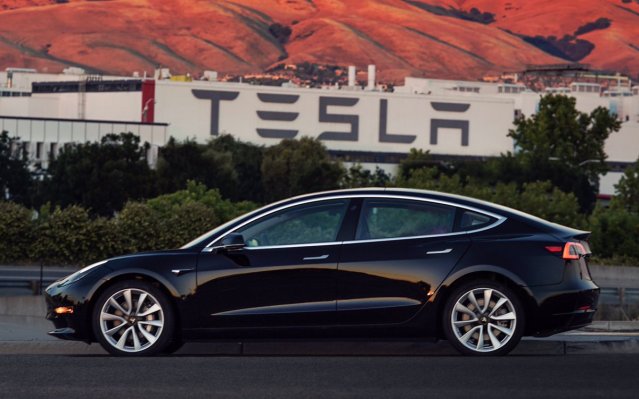A little more than a year ago, Tesla CEO Elon Musk handed over the first Model 3 electric vehicles to employees at a splashy event in Hawthorne, California. It’s been (production) hell ever since, a term Musk has used repeatedly in the past 12 months as the electric automaker struggled to ramp up production of its most important vehicle to date.
Now, a month after Tesla hit a key milestone and produced nearly 5,000 Model 3 cars in the last week of June, investors, fans and critics are waiting to get a closer look at the company’s finances. Tesla is expected to report its second quarterly earnings after the market closes August 1. A conference call will be held at 2:30 pm PT.
Here’s what we’re looking for and what we hope to hear from Musk:
Conversions
Tesla has opened the Model 3 waitlist floodgates and invited all reservation holders in the U.S. and Canada to order the electric sedan.
Tesla might not share the number of reservations holders who have opted to ask for a refund or to go ahead and order a Model 3. But that figure would give insight on demand as well as help determine what obstacles lie ahead. For instance, a large number of reservations converting to orders might signal a rosy future for revenue as well as potential headwinds in production and delivery times with the increased volume.
Those reservations also equal money. The company had $985 million in customer deposits, which includes the Model 3, at the end of the first quarter. Once a customer decides to buy a Model 3, their $1,000 deposit becomes non-refundable and another $2,500 payment is required to complete the order.
Cash
The company did bring in record revenues in 2017— $11.8 billion in all. And first-quarter revenues of $3.4 billion were 26% higher than the previous quarter.
But revenue only tells part of the story.
A Bloomberg analysis in May estimates Tesla is spending more than $7,430 every minute. Tesla’s free cash flow, which is the amount of cash it generates after accounting for capital expenditures, has been negative for six consecutive quarters.
Tesla ended the first quarter with a cash balance of $2.67 billion, a $702 million drop from the previous quarter. Tesla saw its net debt increase $1.05 billion. The company’s outstanding debt is more than $10 billion.
And it doesn’t appear that the spending has slowed. The company is pulling skilled workers from a variety of departments to work on its vehicle and battery plants, sometimes flying them in from out of state and housing them in hotels, CNBC reported Tuesday.
It’s just one of the extra costs Tesla is taking on to consistently produce 5,000 or more Model 3 sedans a week if it hopes to be profitable.
Tesla reported in the first quarter a net loss of $784.6 million, or $4.19 per share.
China
China has the potential to be a key market for Tesla. The automaker reached a deal in July with the Shanghai government to build a factory capable of producing 500,000 electric vehicles a year.
The factory would be the automaker’s second assembly plant and aimed at serving the alluring Chinese market.
Watch (or listen) for more information on Tesla’s factory plans for China, including the potential financial strains it will place on the company. Tesla hasn’t provided an estimate of what the factory might cost to build. That’s a critical data point for Tesla, which has been burning through cash as it tries to ramp up production of its Model 3 vehicle.
Cool head
Musk’s combative behavior during the previous earnings call in May and erratic tweets has even supportive investors taking note.
For better or worse, Tesla and Musk are inextricably linked. In the past, Musk’s frankness during calls and his late-night tweets has been celebrated. But patience has grown thin with some in recent weeks, including analysts.
Earnings calls have become a gauge, not just of how the company is holding up, but for its leader as well.
